Mohammad Mehedi Hassan
An advanced data fabric architecture leveraging homomorphic encryption and federated learning
Feb 15, 2024

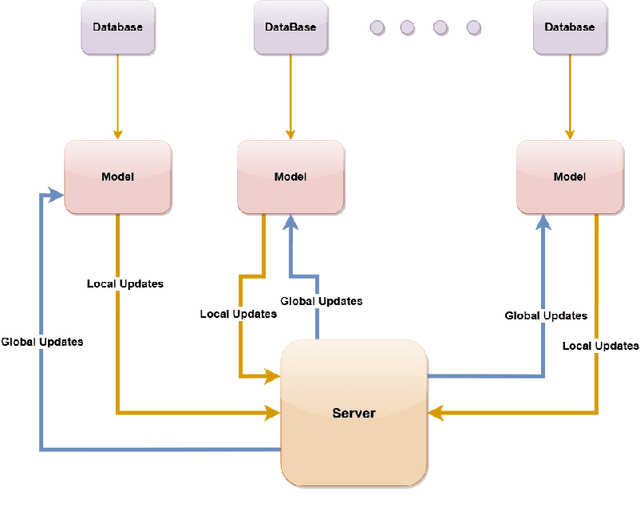

Abstract:Data fabric is an automated and AI-driven data fusion approach to accomplish data management unification without moving data to a centralized location for solving complex data problems. In a Federated learning architecture, the global model is trained based on the learned parameters of several local models that eliminate the necessity of moving data to a centralized repository for machine learning. This paper introduces a secure approach for medical image analysis using federated learning and partially homomorphic encryption within a distributed data fabric architecture. With this method, multiple parties can collaborate in training a machine-learning model without exchanging raw data but using the learned or fused features. The approach complies with laws and regulations such as HIPAA and GDPR, ensuring the privacy and security of the data. The study demonstrates the method's effectiveness through a case study on pituitary tumor classification, achieving a significant level of accuracy. However, the primary focus of the study is on the development and evaluation of federated learning and partially homomorphic encryption as tools for secure medical image analysis. The results highlight the potential of these techniques to be applied to other privacy-sensitive domains and contribute to the growing body of research on secure and privacy-preserving machine learning.
Optimizing UAV-UGV Coalition Operations: A Hybrid Clustering and Multi-Agent Reinforcement Learning Approach for Path Planning in Obstructed Environment
Jan 03, 2024



Abstract:One of the most critical applications undertaken by coalitions of Unmanned Aerial Vehicles (UAVs) and Unmanned Ground Vehicles (UGVs) is reaching predefined targets by following the most time-efficient routes while avoiding collisions. Unfortunately, UAVs are hampered by limited battery life, and UGVs face challenges in reachability due to obstacles and elevation variations. Existing literature primarily focuses on one-to-one coalitions, which constrains the efficiency of reaching targets. In this work, we introduce a novel approach for a UAV-UGV coalition with a variable number of vehicles, employing a modified mean-shift clustering algorithm to segment targets into multiple zones. Each vehicle utilizes Multi-agent Deep Deterministic Policy Gradient (MADDPG) and Multi-agent Proximal Policy Optimization (MAPPO), two advanced reinforcement learning algorithms, to form an effective coalition for navigating obstructed environments without collisions. This approach of assigning targets to various circular zones, based on density and range, significantly reduces the time required to reach these targets. Moreover, introducing variability in the number of UAVs and UGVs in a coalition enhances task efficiency by enabling simultaneous multi-target engagement. The results of our experimental evaluation demonstrate that our proposed method substantially surpasses current state-of-the-art techniques, nearly doubling efficiency in terms of target navigation time and task completion rate.
Human Behavior-based Personalized Meal Recommendation and Menu Planning Social System
Aug 12, 2023



Abstract:The traditional dietary recommendation systems are basically nutrition or health-aware where the human feelings on food are ignored. Human affects vary when it comes to food cravings, and not all foods are appealing in all moods. A questionnaire-based and preference-aware meal recommendation system can be a solution. However, automated recognition of social affects on different foods and planning the menu considering nutritional demand and social-affect has some significant benefits of the questionnaire-based and preference-aware meal recommendations. A patient with severe illness, a person in a coma, or patients with locked-in syndrome and amyotrophic lateral sclerosis (ALS) cannot express their meal preferences. Therefore, the proposed framework includes a social-affective computing module to recognize the affects of different meals where the person's affect is detected using electroencephalography signals. EEG allows to capture the brain signals and analyze them to anticipate affective toward a food. In this study, we have used a 14-channel wireless Emotive Epoc+ to measure affectivity for different food items. A hierarchical ensemble method is applied to predict affectivity upon multiple feature extraction methods and TOPSIS (Technique for Order of Preference by Similarity to Ideal Solution) is used to generate a food list based on the predicted affectivity. In addition to the meal recommendation, an automated menu planning approach is also proposed considering a person's energy intake requirement, affectivity, and nutritional values of the different menus. The bin-packing algorithm is used for the personalized menu planning of breakfast, lunch, dinner, and snacks. The experimental findings reveal that the suggested affective computing, meal recommendation, and menu planning algorithms perform well across a variety of assessment parameters.
FallDeF5: A Fall Detection Framework Using 5G-based Deep Gated Recurrent Unit Networks
Jun 29, 2021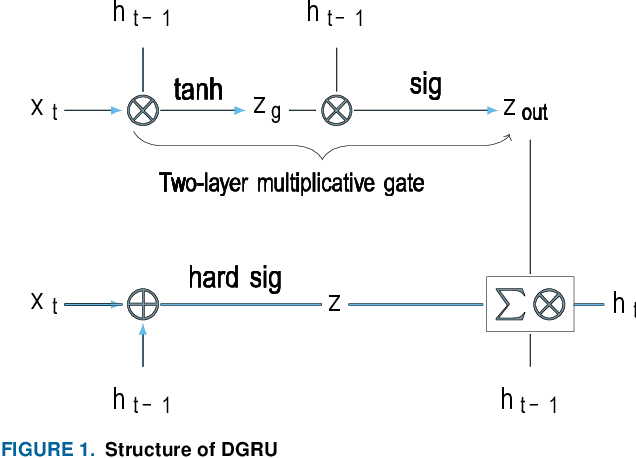
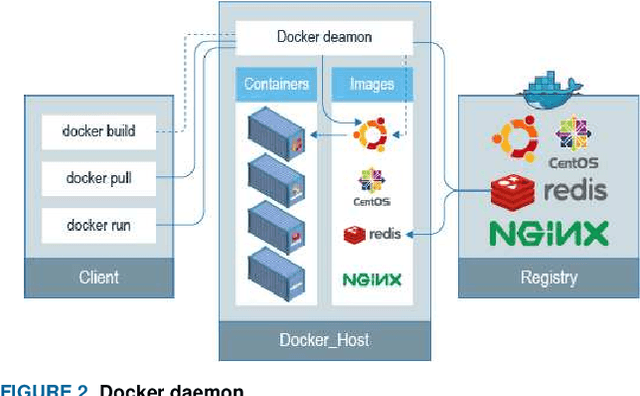
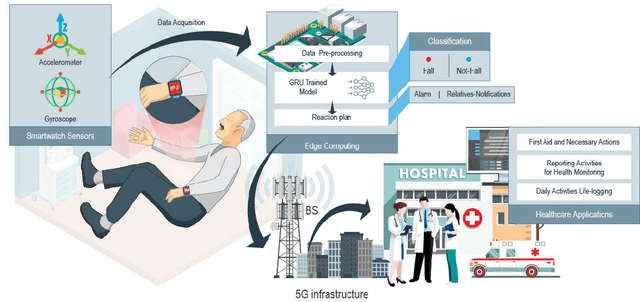
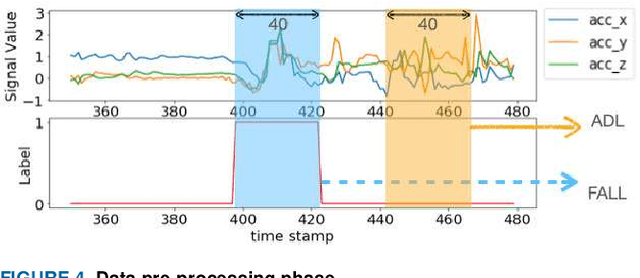
Abstract:Fall prevalence is high among elderly people, which is challenging due to the severe consequences of falling. This is why rapid assistance is a critical task. Ambient assisted living (AAL) uses recent technologies such as 5G networks and the internet of medical things (IoMT) to address this research area. Edge computing can reduce the cost of cloud communication, including high latency and bandwidth use, by moving conventional healthcare services and applications closer to end-users. Artificial intelligence (AI) techniques such as deep learning (DL) have been used recently for automatic fall detection, as well as supporting healthcare services. However, DL requires a vast amount of data and substantial processing power to improve its performance for the IoMT linked to the traditional edge computing environment. This research proposes an effective fall detection framework based on DL algorithms and mobile edge computing (MEC) within 5G wireless networks, the aim being to empower IoMT-based healthcare applications. We also propose the use of a deep gated recurrent unit (DGRU) neural network to improve the accuracy of existing DL-based fall detection methods. DGRU has the advantage of dealing with time-series IoMT data, and it can reduce the number of parameters and avoid the vanishing gradient problem. The experimental results on two public datasets show that the DGRU model of the proposed framework achieves higher accuracy rates compared to the current related works on the same datasets.
AI-Skin : Skin Disease Recognition based on Self-learning and Wide Data Collection through a Closed Loop Framework
Jun 05, 2019



Abstract:There are a lot of hidden dangers in the change of human skin conditions, such as the sunburn caused by long-time exposure to ultraviolet radiation, which not only has aesthetic impact causing psychological depression and lack of self-confidence, but also may even be life-threatening due to skin canceration. Current skin disease researches adopt the auto-classification system for improving the accuracy rate of skin disease classification. However, the excessive dependence on the image sample database is unable to provide individualized diagnosis service for different population groups. To overcome this problem, a medical AI framework based on data width evolution and self-learning is put forward in this paper to provide skin disease medical service meeting the requirement of real time, extendibility and individualization. First, the wide collection of data in the close-loop information flow of user and remote medical data center is discussed. Next, a data set filter algorithm based on information entropy is given, to lighten the load of edge node and meanwhile improve the learning ability of remote cloud analysis model. In addition, the framework provides an external algorithm load module, which can be compatible with the application requirements according to the model selected. Three kinds of deep learning model, i.e. LeNet-5, AlexNet and VGG16, are loaded and compared, which have verified the universality of the algorithm load module. The experiment platform for the proposed real-time, individualized and extensible skin disease recognition system is built. And the system's computation and communication delay under the interaction scenario between tester and remote data center are analyzed. It is demonstrated that the system we put forward is reliable and effective.
 Add to Chrome
Add to Chrome Add to Firefox
Add to Firefox Add to Edge
Add to Edge